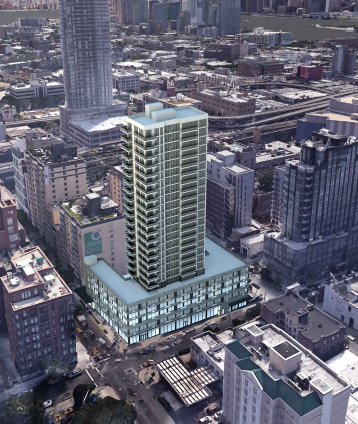By Bill Parry
These days Long Island City is referred to as “The Jewel of the Borough” and “The Gateway to Queens” with its beautiful waterfront parks and gleaming residential towers.
Years ago it was a very different place, however.
“It was all factories,” lifelong resident Frank Carrado said. “We had a lot of pollution because of them. You could walk across the East River because there was so much sludge and garbage and the stench was so bad that we prayed that the wind would blow it over Brooklyn.”
The 84-year-old noticed things changing soon after 2000.
“That’s when all the factories started coming down, the old Pepsi Factory and Admiral TV, they all came down and these high-rise apartment buildings started going up,” Carrado said.
The Department of City Planning identified Long Island City as a “growth area with significant potential for office, retail and residential development” in 2001. The City Council followed with the rezoning of 37 centrally located blocks to foster reinvestment and redevelopment to take advantage of excellent mass transit and its large supply of large underdeveloped properties.
A boomtown was born.
Gayle Baron had a front row seat 15 years ago at the LIC Business Development Corporation before it was rebranded as the LIC Partnership in 2010.
“Right at the start you’d walk through Queens Plaza and see broken sidewalks, graffiti-covered buildings and prostitutes,” she said..
“Carolyn Maloney, then Borough President Helen Marshall and Amanda Burden of City Planning all knew that we had to clean it up before you could lure developers,” Baron said. “We needed capital funding from the city, but it was all going to Brooklyn. Maloney was the one who started putting coins in the piggy bank.”
U.S. Rep. Carolyn Maloney said, “With my colleagues at other levels of government, and the support of the community, I have helped secure or advocated for funding for parks, healthcare, affordable housing, infrastructure and transportation projects, and innovative economic development programs. All of this and more has helped beautify Long Island City. Without this partnership and these investments, Long Island City might not be what it is today: the fourth largest business district in New York; the largest in Queens and, quite frankly, a pretty great place to work, live and play.”
The real estate developers followed. TF Cornerstone began building the East Coast development project on the waterfront where the Pepsi factory once stood on Center Boulevard. The sixth and final building started renting earlier this spring. The community has 2,100 units.
TF Cornerstone went to work on the colossal 5,000 unit Hunters Points South project, where it won the Phase 2 contract and will build 1,193 apartments.
With the waterfront filling up, other developers turned their eyes to other sections of Long Island City.
Rockrose Development Corporation has plans for four major residential projects in Court Square, including the tallest residential building in Queens at 43-25 Hunter St. that will rise 50 stories with 975-units.
The $1 billion Court Square project will change the neighborhood from industrial to residential (because of so many residential properties going up). Rockrose President Justin Elghanayan also envisions a retail and entertainment hub to support the new residential community and take advantage of the area’s seven subway lines that are within walking distance.
“We’re going to see what retailers come to us,” Elghanayan said. “We want that to be organic, people that want to be here. As the population grows, the retail will as well.”
David Brause, the president of Brause Realty who played a pivotal role in bringing Met Life and JetBlue to the Brewster Building on Queens Plaza North said, “What a great time to be in LIC real estate with 8,000 units planned between Court Square and Queens Plaza in addition to thousands more on the waterfront. There are 23 hotels with eight more under construction. Industrial warehouses don’t have to be torn down, they can be repurposed for office space for media and tech companies. Gritty is good. People don’t want sanitized neighborhoods anymore.”
One of the great success stories is that of Modern Spaces, the real estate company that has captured a grand total of 70 percent of the market share of residential units, both condo and rentals, according to co-founder Eric Benaim. in Long Island City.
“I could see it happening when we got here in 2005. When Rockrose and Cornerstone started building, I knew it was real,” he said. “Ted Kokkoris and I opened in a ground floor apartment because there were no storefronts available at that time. Now we have five locations and 70 agents.”
Baron, who retired as president of the LIC Partnership last year, looked back at the sequence of events and said, “It didn’t happen overnight, it was a slow steady progression all those many years, but it was exhilarating, no question about it. It was a once-in-a-lifetime opportunity and it’s wonderful to see it now.”
Reach reporter Bill Parry by e-mail at bparry@cnglocal.com or by phone at 718-260-4538.


































